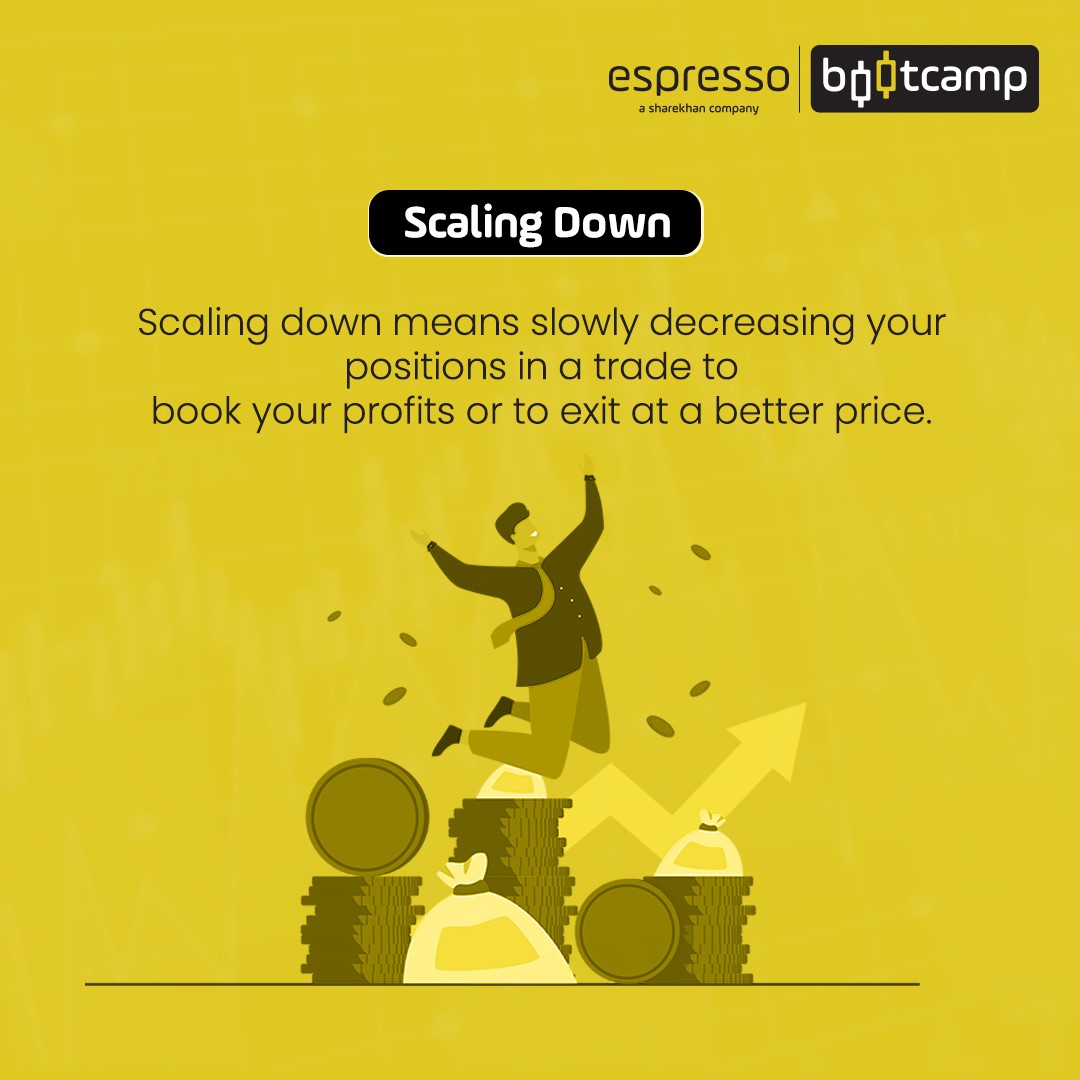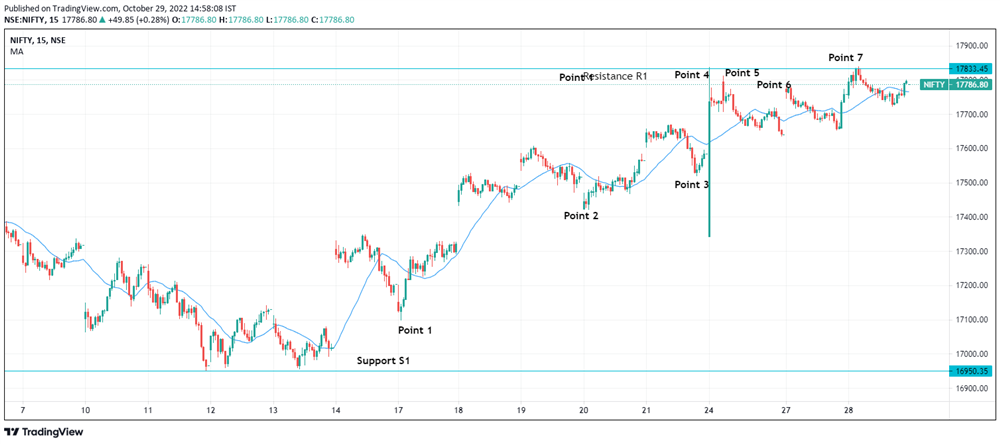06. Scaling In and Scaling Out: What You Must Know About These Trading Strategies

Scaling is commonly understood as a measure of a thing. We have heard of mountaineers scaling famous mountain peaks like Everest or Kilimanjaro etc. In the trading world, it is like climbing up or down in a measured way. Scaling is a popular trade and money management tool traders use to restrict potential losses and improve profits.



Scaling is a gradual process of adding or reducing the position to have an optimal average cost of buying or selling. More often than not, traders buy or sell in one go. Scaling, on the other hand, is opening a trade with a fraction of the intended capital. This reduces the risk of loss if the trade goes against expectations and only a fraction of capital is involved. However, positions can be added if the trade moves in your favour. Although it also implies that the profits get reduced as you add your position in favour of the trend. Similarly, scaling helps while booking profits, as multiple exits help pocket deeper profits.
More importantly, scaling allows multiple entries or exit points. There cannot be one perfect entry point in any trade. Many traders avoid the trade as they think they have missed the entry point and the price has moved. This problem is mitigated in scaling as trade is taken at multiple entry points.
Scaling helps in stocks with less liquidity, and buying and selling can considerably impact the stock price.
There are two types of scaling; scaling in and scaling out.

Scaling in
Scaling in or scaling up involves opening a trade with smaller quantities of lots and gradually increasing the lots as the trade progresses in favour. The entry points can be two or more, depending on the trend. After the initial position, the next entry point will be at a predetermined price range determined by the trader’s strategy. For example, the Nifty 15 minutes chart below has seen a change in trend. At point 1, Nifty has made a higher bottom after the support at S1 has been respected. A buy can be made after the prices have closed above 20 SMA. At point 2, Nifty again made a sharp bottom where another position can be added when the price exceeds 20 SMA. Similarly, at point 3, one more position can be added.
Scaling out
Scaling out or scaling down involves gradually reducing the position as the trade either continues its trend, consolidates, or starts facing resistance. This helps in holding some part of the position while booking a part of the position to take advantage of the trend continuation. Continuing the same example, at point 4, one can see uncertainty, and we should be looking to scale down. Point 5 confirms it and we can start scaling down as the price crosses below 20 SMA. At point 6, Nifty is unable to cross the previous top signalling a scale-down again if the price crosses below 20 SMA. At point 7 Nifty is facing resistance and again one can exit as the price crosses below 20 SMA.
Advantages of scaling
As discussed above, the greatest advantage is averaging. Second, it reduces the risk if the initial trade goes against the expectation and the money lost, or the stop loss is comparatively less. Third, the entry and exit can be done after careful consideration as the time at disposal is more. This avoids knee-jerk and haphazard entries and exits.
Disadvantage of scaling
The greatest disadvantage or risk in scaling is the position in hand if the trade goes against the expectation. The risk of unexpected market reversals is a given thing in trading. This risk is inherent in scaling as positions are added while the market trends in the trader's favour and eventually end up with a larger exposure. Moreover, the positions added later may be close to an exhaustion of the trend. The loss can wipe out considerable capital if proper money management technique is not employed. Part profit-taking reduces the overall profit. Scaling also increases the commission costs.
Conclusion
Scaling provides a trader with many comforts; therefore, it is very good for a professional trader and a beginner. It also helps the trader develop patience and confidence as scaling gives more opportunities to think and trade. But that doesn't mean that one should not book profits. Booking regular profits when the position has gone far beyond has to be cultivated as a virtue. Though risk management is inherent in scaling, it is necessary to have hard stops or overall percentage stop losses in place. Remember to add only when the position is in favour and not against.
 0
|
0
|
 0
0
 Modules
Modules
 Watch
Watch 
